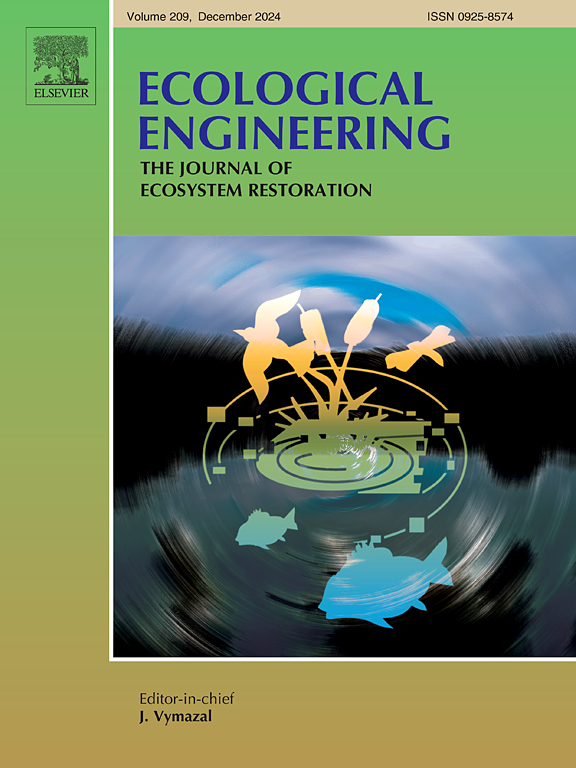The effectiveness of a fish-friendly pumping station for critically endangered European eel; An assessment using live eels, fish-mounted sensors and passive sensors
IF 3.9
2区 环境科学与生态学
Q1 ECOLOGY
引用次数: 0
Abstract
Fish-friendly pumps may provide safe downstream passage for seaward migrating silver European eel, Anguilla anguilla, at pumping stations but further research into their effectiveness is urgently required. This study uniquely combined health assessments of live fish, including behaviour, delayed (48-h) mortality and post-mortem post-passage, with fish-mounted (fish backpack sensors; FBS) and passive (barotrauma detection system; BDS) sensors that passed through a fish-friendly axial flow pump in situ at a real-world pumping station to comprehensively quantify the effectiveness. Nineteen eels (including two control eels released directly into the recapture net) were recaptured and there was no immediate or delayed (n = 5, including one control eel) mortality or behavioural change, nor were there any major external or internal injuries. Minor external injuries were newly present on most eels (84.6 %) that underwent a post-mortem post-passage (n = 13) but were equivalent to the types of pathologies recorded pre-passage and were considered unlikely to affect function or survival. A previously defined acceleration threshold for fish vertebrae damage (>50 m/s2) was exceeded by all FBS and BDS (up to 66.48 m/s2), predominantly (89.15 %) after passing through the pump, but no eels showed any evidence of spinal injury or vertebral deformity, indicating that this threshold may be overly conservative for eels. Extremes of pressure (i.e., nadir) and changes in pressure (i.e., pressure rate of change (PRC) and log ratio of pressure change (LRPC)) recorded by FBS and BDS were well below thresholds known to induce injury in American eels (Anguilla rostrata) of similar length and no pressure-related injuries were found during post-mortems. Indeed, it illustrated the importance of using sensors alongside live fish to further our understanding of species-specific injury thresholds. Overall, this study demonstrated the effectiveness of a newly installed axial flow fish-friendly pump (under ‘normal’ operating conditions), using live fish and two types of sensors to quantify conditions during passage.
求助全文
约1分钟内获得全文
求助全文
来源期刊

Ecological Engineering
环境科学-工程:环境
CiteScore
8.00
自引率
5.30%
发文量
293
审稿时长
57 days
期刊介绍:
Ecological engineering has been defined as the design of ecosystems for the mutual benefit of humans and nature. The journal is meant for ecologists who, because of their research interests or occupation, are involved in designing, monitoring, or restoring ecosystems, and can serve as a bridge between ecologists and engineers.
Specific topics covered in the journal include: habitat reconstruction; ecotechnology; synthetic ecology; bioengineering; restoration ecology; ecology conservation; ecosystem rehabilitation; stream and river restoration; reclamation ecology; non-renewable resource conservation. Descriptions of specific applications of ecological engineering are acceptable only when situated within context of adding novelty to current research and emphasizing ecosystem restoration. We do not accept purely descriptive reports on ecosystem structures (such as vegetation surveys), purely physical assessment of materials that can be used for ecological restoration, small-model studies carried out in the laboratory or greenhouse with artificial (waste)water or crop studies, or case studies on conventional wastewater treatment and eutrophication that do not offer an ecosystem restoration approach within the paper.
 求助内容:
求助内容: 应助结果提醒方式:
应助结果提醒方式:


